Morton’s Neuroma Surgery Recovery
Posted September 24, 2025 in Morton’s Neuroma

Being diagnosed with Morton’s neuroma can feel like a relief, both physically and mentally. After dealing with foot pain that makes every step uncomfortable, you finally have a name for what’s been causing your discomfort. You may have already tried non-surgical treatments—switching shoes, using orthotics, or getting injections—but if the pain persists, surgery may be your best chance to achieve lasting relief from your symptoms. When deciding which Morton’s neuroma surgery is best for you, one of your biggest concerns is likely how long your recovery will take and when you’ll be able to return not only to your daily routine but also to the sports and activities you love. In this blog, we’ll go over your surgical options for treating Morton’s neuroma, as well as what to expect from your recovery.
6 Min Read:
Table of Contents
- What Is Morton’s Neuroma?
- Non-Surgical Options For Morton’s Neuroma at Chelsea Foot and Ankle in New York
- How Long Is Recovery After a Neurectomy?
- How Long Is Recovery After a Decompression Neuroplasty?
- Choosing the Right Morton’s Neuroma Surgery For You
- Find Relief from Morton’s Neuroma in New York
What Is Morton’s Neuroma?
Morton’s neuroma is a condition that develops when the tissue around one of the nerves between the toes thickens. This nerve compression most commonly occurs between the third and fourth toes, leading to symptoms such as sharp, burning pain in the ball of the foot, numbness or tingling in the toes, or a persistent feeling that you’re walking on a pebble. If you suffer from Morton’s neuroma, it can make standing, walking, or exercising extremely difficult and uncomfortable.
Several factors can contribute to the development of Morton’s neuroma, including repetitive pressure on the forefoot, wearing narrow or high-heeled shoes, or underlying structural issues such as flat feet or high arches.
Non-Surgical Options for Morton’s Neuroma at Chelsea Foot and Ankle in New York
At Chelsea Foot and Ankle in New York, we believe that conservative care is always the first step in treating Morton’s neuroma. Many of our patients experience relief without the need for surgery, utilizing options like:
- Footwear adjustments: Wearing shoes with wider toe boxes and cushioned soles can relieve pressure on the nerve.
- Custom orthotics: Insoles tailored to your specific foot mechanics can reduce abnormal stress on your forefoot.
- Padding and taping: Various taping and padding techniques can change the weight distribution on your feet and limit nerve irritation.
- Anti-inflammatory medications: Used to reduce swelling and pain.
- Corticosteroid injections: Targeted injection treatments are often used to calm inflammation around the nerve.
- Sclerosing Ethanol injections: Targeted neurolytic injections to shrink inflamed nerve tissues.
- Advanced treatments: Options such as cryoablation, extracorporeal shockwave therapy (ESWT), and radiofrequency ablation (RFA) may be utilized before taking the next step toward surgery for Morton’s neuroma.
When these non-invasive or minimally invasive treatment methods fail to control pain or when your Morton’s neuroma symptoms interfere with your quality of life, surgery to correct the issue becomes the next logical step. At Chelsea Foot and Ankle, our expert surgeons will use one of two surgical options to address and ease your Morton’s neuroma pain: a neurectomy or a decompression neuroplasty (also known as a KOBY-Gard procedure).
How Long Is Recovery After a Neurectomy?
A neurectomy involves surgically removing the thickened, damaged section of the nerve in your foot and releasing tight ligaments to eliminate the source of the pain. While a neurectomy is effective, it can leave the affected toes with a small degree of permanent numbness. However, the relief achieved through this procedure far outweighs this side effect for a majority of patients.
Recovery times vary for each patient, but in general, you can expect the following:
Weeks 1–2
You will wear a surgical shoe and keep weight off your foot as much as possible during your initial recovery from a neurectomy. You should elevate your foot as much as possible to help minimize swelling. Any pain or discomfort can be managed with prescription or over-the-counter medication.
Weeks 3–6
You’ll be able to transition into wider, supportive footwear at this time. Walking short distances will become easier, though any high-impact or strenuous activities should still be avoided.
Weeks 6–8
By this point in your neurectomy recovery, you should be able to comfortably return to an office job and your daily activities. However, mild swelling or stiffness may still persist.
3–6 Months
Athletic activities, such as running or high-impact sports, can typically be resumed at this stage of recovery. Many patients still experience residual numbness in their toes, but this is common and usually not problematic.
How Long Is Recovery After a Decompression Neuroplasty?
A decompression neuroplasty, also known as the KOBY-Gard procedure, takes a different approach than a neurectomy. Instead of removing the nerve, the surrounding ligament or tissue that’s putting pressure on it is released. This nerve-sparing technique is less invasive than a neurectomy, which often means a faster recovery.
Again, recovery timelines vary, but in general, you can expect:
Weeks 1–2
You will rest your foot and wear protective footwear for the first couple of weeks after your decompression neuroplasty surgery, though any pain and swelling you experience are often milder compared to a neurectomy.
Weeks 3–4
The transition to supportive shoes will enable you to walk comfortably. Many patients report feeling improvements sooner than they expected.
Weeks 4–6
Low-impact exercises and light daily activity can usually be resumed by this point in your recovery from decompression neuroplasty surgery.
2–3 Months
By this stage in your decompression neuroplasty recovery, you may be cleared to return to running, athletics, and high-impact activities earlier than if you underwent a neurectomy.
Choosing the Right Morton’s Neuroma Surgery for You
Both neurectomy and decompression neuroplasty have excellent success rates for relieving Morton’s neuroma pain, but the right choice for you depends on your particular condition and long-term goals. Neurectomy permanently removes the problematic nerve segment, which can be ideal for severe or recurring cases. Decompression neuroplasty preserves the nerve and offers a faster recovery, but may not be suited for every patient. The best way to determine which Morton’s neuroma surgery is right for you is to schedule a consultation at Chelsea Foot and Ankle. They will evaluate your symptoms, activity level, and lifestyle before recommending the most effective treatment for your Morton’s neuroma.
Find Relief From Morton’s Neuroma in New York
Morton’s neuroma not only causes foot pain, but it also disrupts your entire lifestyle, from walking comfortably to enjoying sports and fitness activities. To learn more about Morton’s neuroma treatments, from conservative options to surgical solutions like neurectomy or decompression neuroplasty, schedule a consultation with Dr. Ethan Ciment or one of his highly trained and experienced team members today by calling (646) 929-4149 or completing the online contact form.
